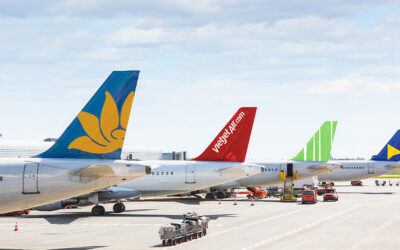One of the first and main actions of pilots before a take-off is a checklist procedure, which is the key to why airline travel is the safest form of travel.
There are more than 100,000 commercial passenger flights each day and the number is still rising. Nevertheless, flights remain the safest way to travel, because safety is a top priority for all companies and organizations operating in aviation industry. While technology has helped drive improvements in safety record, great strides in safety management systems and insights into human factors have also contributed significantly.
Air accident investigations and aircraft safety inspections are now more effective. Improvements in manufacturing technology and better quality control are also making aircraft safer. But the security checking procedure does not cease in a factory. Aircraft are repeatedly checked by crew before each flight. There have been important safety developments in recent decades in the area of crew or cockpit resource management and the monitoring of data, which are aimed at reducing the risk of human error.
It is stressed that the Pilot in Command is 100% responsible for verifying that the aircraft is perfectly safe to fly before even getting into the cockpit. Pilots have recurrent check rides every 6-12 months and captains have line checks every year and proper checklist usage is among the most basic requirements to pass these checks. The importance of a proper pre-flight is emphasised to pilots by their flight instructors from day one in a light aircraft and all the way up to heavy transport-category aircraft.
In aviation, a pre-flight checklist is a list of tasks that should be performed by pilots and aircrew prior to a take-off. Pilots also use checklists for both normal and non-normal operations: for routine situations, for landings, take-offs, for malfunctions, and for emergencies. Checklists are usually printed on a card — paper or cardboard – sometimes laminated and often folded vertically and/or lengthwise. A single card is divided into as many as a dozen of separate checklists, each of which will be read aloud depending on the phase of a flight.
The pre-flight checklist tends to be the longest, and can consist of thirty or more steps. It depends on the airline and aircraft type. For example, Boeing, Airbus, and the other manufacturers devise initial, standard checklists for every airplane type. The basics are always the same, but airlines tailor them in accordance with their training and standard operating procedures. On the newest jets, checklists are presented electronically on a screen, though there is always a hard copy as well.
Most of the checklists are read aloud in a challenge/response format. One pilot reads the item, and the other pilot calls out the verification. On the ground it is usually the first officer who does the reading. In the air – whichever pilot is not physically flying.
There is also a discipline in using checklists. Interruptions are the most common form of a checklist failure. In order to complete the aircraft checking procedure smoothly, pilots use some simple techniques that enable them to remember the exact place/item he or she stopped at going through the checklist, e.g. by keeping a finger on a particular item on the list. However, if a pilots feels that they cannot remember that, he or she must just start over to clear any doubts.
Professionals also use various techniques to make sure they do not forget to do a checklist. Typically, they leave the checklist in a prominent place – in front of a screen or throttle lever – so that it would not be forgotten. Others do not put their shoulder harness for landing until the landing checklist is completed.
The checklist procedure is also a good opportunity to practise emergency procedures. As pilot checks the ammeter, considers what he or she would do if it showed a discharge. It puts the emergency into perspective quite nicely for the pilot, allowing him or her to prioritize with ease and maintain positive control of the situation. But BAA Training aviation academy truly hopes, that the checklist will be just a prevention tool from unexpected situations and will not be needed for emergency landings.








